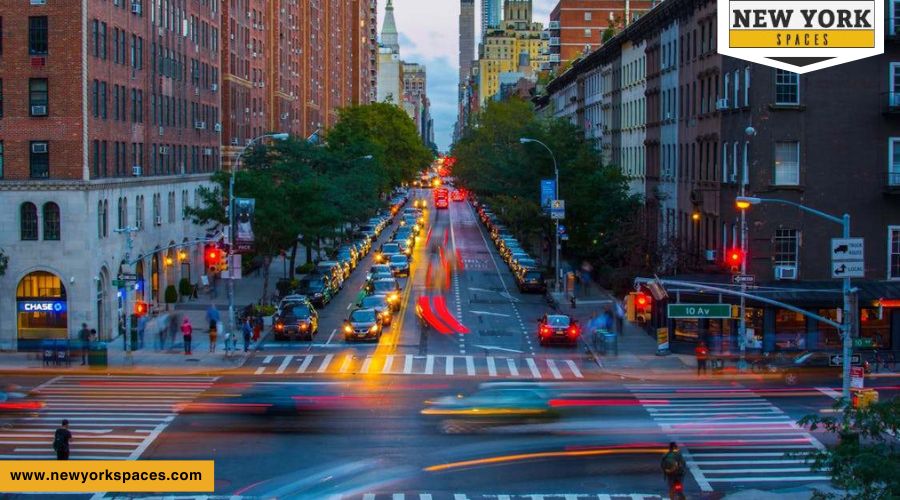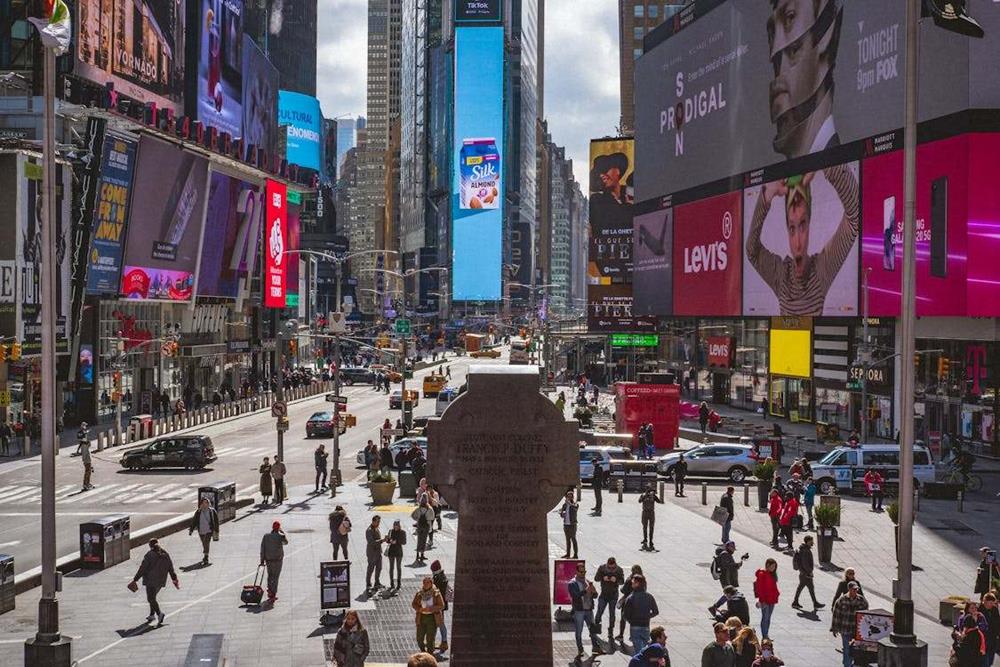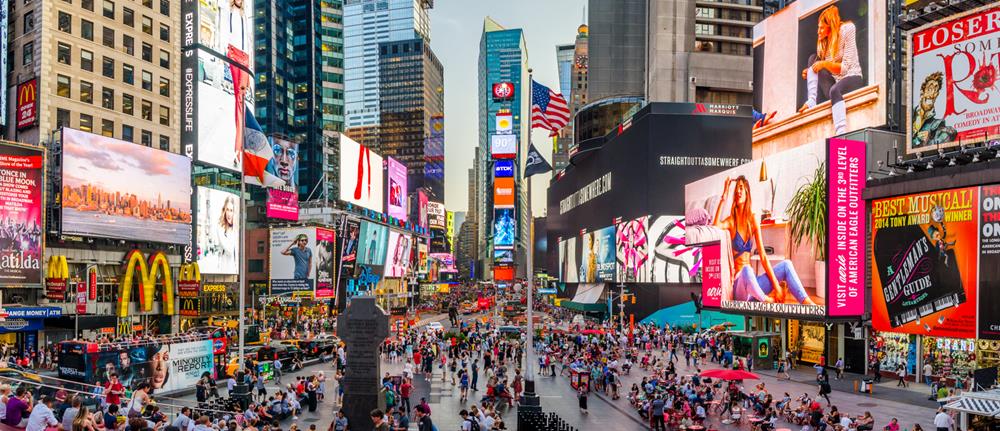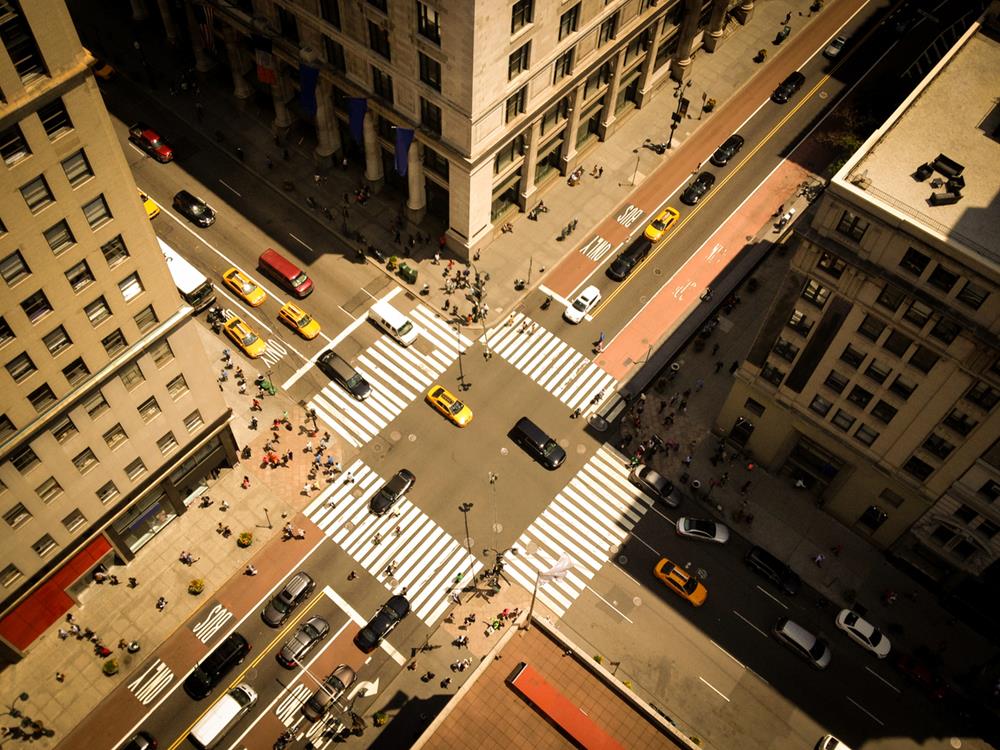New York City, often hailed as the epitome of a bustling metropolis, thrives on its constant movement and vibrant energy. At the heart of this urban dynamo are its intersections, where the pulse of the city beats the strongest. In this post, we’ll dive into the most frenetic crossroads of NYC, shedding light on what makes them tick and why they’re worth braving the crowds to experience firsthand.
The Heartbeat of New York – Key Intersections
In the pulsating heart of New York City, intersections are more than mere points of transit; they are vibrant hubs where the city’s cultural richness, economic vitality, and dynamic populace converge. These bustling crossroads serve as critical nodes within the urban fabric, underpinning the intricate web of life that defines the metropolis. The ceaseless stream of pedestrians, dense flow of traffic, and surrounding landmarks and commercial establishments contribute to the unique rhythm and character of each intersection. From the iconic storefronts of Fifth Avenue to the historic theaters of Broadway, these key junctions are stages for the city’s myriad events, celebrations, and daily interactions, highlighting their significance beyond mere points of passage.
Moreover, New York’s busiest intersections showcase the city’s ability to balance the chaos of high-density living with the order necessary to keep the urban machine running smoothly. They exemplify the intricate dance of coordination and cooperation among pedestrians, vehicles, and cyclists, managed by an elaborate system of traffic signals and regulations. This delicate balance ensures that despite the inherent congestion, there is a semblance of harmony that allows the city to function efficiently. These intersections are not just the city’s arteries through which the lifeblood flows; they are communal spaces where the heartbeat of New York is most palpable, reflecting its complexity, diversity, and vibrancy.
Criteria for Identifying NYC’s Busiest Intersections
When selecting New York City’s busiest intersections for exploration, we consider a blend of quantitative and qualitative criteria that highlight their significance in the urban fabric. Here’s an expanded view with sub-topics for each criterion:
Traffic Data – The Pulse of Movement
- Vehicular Volume: Analysis of the number of cars, buses, taxis, and other vehicles passing through the intersections daily.
- Congestion Levels: Insights into peak travel times and congestion, identifying intersections that are critical bottlenecks.
- Public Transportation Flow: Examination of bus routes, subway station entrances, and other public transit links that impact pedestrian and vehicular traffic.
Pedestrian Counts – The Human Flow
- Daily Foot Traffic: Metrics on the number of pedestrians traversing the intersections, highlighting areas with high footfall.
- Accessibility and Connectivity: Evaluation of how well the intersections connect to major city attractions, retail corridors, and business districts, influencing pedestrian movement.
- Time-of-Day Variations: Understanding fluctuations in pedestrian traffic across different times of the day and week to gauge the intersection’s dynamic nature.
Cultural Significance – The Soul of the Crossroads
- Historical Landmarks: Identifying intersections that are home to or adjacent to buildings, monuments, or sites of historical importance.
- Iconic Buildings and Venues: Highlighting intersections that boast significant cultural, entertainment, or architectural landmarks.
- Public Squares and Gathering Places: Recognizing intersections that serve as communal spaces for public gatherings, celebrations, parades, or demonstrations, contributing to their cultural vibrancy.
By integrating these sub-topics into our analysis, we can paint a comprehensive picture of what makes certain New York City intersections stand out, not just for their busyness but for their integral role in the city’s daily life and cultural tapestry.
Busiest Intersections in the City
Times Square (Broadway and Seventh Avenue)
Times Square stands as a beacon of urban vibrancy, its streets awash with a perpetual glow from the neon lights and mammoth digital billboards that adorn its facades. This intersection is more than a mere tourist hotspot; it’s the pulsating heart of the city’s entertainment district, surrounded by an array of Broadway theaters and a plethora of major retail outlets. Daily pedestrian counts soar into the hundreds of thousands, a testament to the area’s magnetic appeal and its embodiment of New York City’s relentless dynamism. Times Square’s cultural footprint is colossal, serving as the central stage for the world-renowned New Year’s Eve ball drop, an event that draws eyes from across the globe, cementing its status as an emblem of celebration and renewal.
Herald Square (Broadway, Sixth Avenue, and 34th Street)
Herald Square is a retail mecca, anchored by the iconic Macy’s flagship store, which holds the title of the largest department store in the United States. The intersection is a hive of activity, bustling with a diverse mix of shoppers, commuters, and tourists. Its significance extends beyond commerce; Herald Square is steeped in history and plays a pivotal role in hosting the Macy’s Thanksgiving Day Parade, an annual spectacle that transforms the square into a tableau of giant balloons, elaborate floats, and festive performances, weaving a rich tapestry of tradition and festivity into the fabric of the city.
59th Street and Fifth Avenue
At the southeast corner of Central Park, the intersection of 59th Street and Fifth Avenue is a focal point of luxury and leisure in the city. With the Plaza Hotel, the Apple Store, and the entrance to Central Park, this area attracts a mix of tourists, tech enthusiasts, and locals seeking green space. The intersection serves as a gateway to the Upper East Side, one of the city’s most affluent neighborhoods, and is frequently congested with both foot traffic and the comings and goings of horse-drawn carriages, adding a quaint charm to the urban bustle.
Lexington Avenue and 59th Street
The intersection of Lexington Avenue and 59th Street is bustling due to its close proximity to Bloomingdale’s, one of New York City’s landmark department stores. The area is a shopper’s paradise, drawing both locals and tourists to its wide array of retail offerings. Additionally, this intersection serves as a gateway to the Upper East Side, making it a busy passageway for both pedestrians heading to the neighborhood’s residential areas and shoppers laden with their latest purchases.
Union Square (Broadway and 14th Street)
Union Square is a dynamic epicenter of cultural and commercial exchange, where the weekly Union Square Greenmarket breathes life into the area with its array of fresh produce and artisanal offerings from local farmers. The surrounding streets are a mosaic of retail shops, restaurants, and cafes, creating a bustling atmosphere that attracts a diverse crowd. Beyond its commercial allure, Union Square is renowned as a platform for social and political expression, frequently hosting rallies, demonstrations, and cultural events that underscore its role as a crucible for civic engagement and community activism.
Columbus Circle (Eighth Avenue, Broadway, Central Park South, and Central Park West)
Columbus Circle serves as a strategic juncture at the southwest corner of Central Park, acting as a vital conduit for traffic navigating the complexities of Manhattan’s grid. This roundabout is more than a traffic node; it’s a landmark in its own right, highlighted by the towering monument to Christopher Columbus and flanked by the Time Warner Center’s twin skyscrapers. The Circle’s strategic position makes it a bustling passageway for both pedestrians and vehicles, offering a gateway to the natural respite of Central Park and the cultural riches of the Upper West Side.
Canal Street and Broadway
The intersection of Canal Street and Broadway marks a melting pot of cultural influences, lying at the crossroads of Chinatown, Tribeca, and SoHo. Known for its vibrant street markets and an eclectic mix of genuine and counterfeit goods, this area pulsates with energy, drawing bargain hunters and tourists alike. The streets are lined with an assortment of shops and eateries, offering a taste of the city’s rich cultural diversity. Canal Street’s bustling nature is a reflection of New York’s multifaceted identity, showcasing the city’s ability to blend tradition and modernity, creating a lively and dynamic urban tapestry.
Fifth Avenue and 42nd Street
Situated near landmarks such as the New York Public Library and Bryant Park, the intersection of Fifth Avenue and 42nd Street is a nexus of cultural and social activity. The area is not only a haven for book lovers and park-goers but also serves as a major thoroughfare for shoppers and tourists making their way along one of the city’s most prestigious shopping streets. The constant flow of buses and the proximity to Grand Central Terminal contribute to the vehicular congestion, making this intersection a bustling hub at almost any time of day.
Urban Design and Traffic Patterns
The grid layout of New York City, while facilitating straightforward navigation, inherently contributes to congestion, particularly at major intersections where avenues and streets intersect at right angles, funneling traffic into concentrated areas. This effect is magnified by the proximity of popular attractions, including landmarks, shopping districts, and cultural venues, which draw large volumes of visitors. These elements combine to create a complex traffic pattern, where the systematic arrangement of the city’s streets meets the unpredictable flow of human and vehicular movement, leading to significant congestion challenges at key points across the cityscape.
Human and Vehicular Factors
The dynamic interplay between pedestrian and vehicular traffic significantly impacts congestion levels at New York City’s busiest intersections. The high volume of pedestrians, characteristic of urban centers, often competes with a diverse array of vehicles for space, leading to bottlenecks and safety concerns. This situation is further complicated by the emergence of new transportation modes, such as ride-sharing services and an increase in delivery vehicles, which add layers of complexity to the already dense traffic environment, necessitating innovative solutions to ensure smooth cohabitation of different transit forms.
Congestion Mitigation Strategies
In response to the congestion plaguing its bustling intersections, New York City employs a multifaceted approach to traffic management, focusing on optimizing traffic signal timings to enhance vehicular flow and reduce waiting times. Additionally, the city is expanding pedestrian zones and sidewalks, creating safer and more spacious environments for foot traffic, which not only improves pedestrian safety but also contributes to reducing vehicular congestion by encouraging walking. Complementing these efforts, enhancements in public transportation aim to provide efficient and attractive alternatives to personal vehicle use, thereby easing the pressure on the city’s roadways.
Environmental and Safety Considerations
Congestion at New York City’s busiest intersections brings with it not just challenges in mobility but also significant environmental and safety concerns. The dense traffic contributes to elevated levels of air and noise pollution, affecting the health and well-being of the city’s residents and environment. Safety becomes a paramount concern as the mix of heavy pedestrian and vehicular traffic increases the risk of accidents. Addressing these issues is integral to the city’s congestion mitigation strategies, with an emphasis on creating a safer, cleaner urban environment.
Infrastructure and Planning
The infrastructure and urban planning strategies of New York City play a crucial role in addressing the congestion at its busiest intersections. By investing in infrastructure improvements, such as redesigning roadways and intersections to better accommodate both vehicular and pedestrian traffic, the city aims to enhance the overall traffic flow. Strategic urban planning initiatives, including zoning laws and traffic regulations, are employed to manage the density of development and the allocation of space, ensuring that the city’s layout supports efficient movement and reduces congestion hotspots.
Pedestrian Paradise – Navigating the Crowds
Navigating New York City’s bustling intersections requires a blend of awareness, patience, and strategic movement, especially for tourists and locals alike who wish to traverse these areas safely and efficiently. Key to this endeavor is the understanding of pedestrian signals and crosswalks, ensuring that one crosses only when it’s safe to do so, thereby avoiding potential hazards associated with vehicular traffic. It’s also advisable to stay alert to the surroundings, keeping an eye out for bikes and scooters that often weave through the cityscape, and to adhere to designated pathways to minimize disruptions in pedestrian flow. For a smoother journey, planning routes that utilize wider sidewalks and pedestrian-friendly streets can make a significant difference in the walking experience, offering a less congested path through the city.
In recent years, New York City has made considerable strides in enhancing pedestrian spaces, most notably through initiatives like the pedestrian plazas in Times Square. These plazas have transformed sections of what were once vehicle-dominated streets into vibrant public spaces where people can walk, sit, and gather without the interference of traffic. The success of Times Square’s pedestrianization reflects a broader shift towards prioritizing pedestrian comfort and safety in urban planning, creating pockets of calm and connectivity amidst the city’s hustle and bustle. These initiatives not only improve the pedestrian experience but also encourage a more walkable city, contributing to the overall health and sustainability of the urban environment.
Conclusion
New York City’s busiest intersections are more than mere points on a map; they are dynamic stages where the drama of urban life unfolds daily. From the neon glow of Times Square to the cultural tapestry of Union Square, these crossroads offer a glimpse into the heart of the city. To truly understand the essence of New York, one must stand at these bustling junctures and feel the energy that propels this city forward.
As you explore these iconic intersections, remember that each step taken on these busy sidewalks connects you to the countless stories and historical moments that have played out here. Whether you’re a first-time visitor or a seasoned New Yorker, the city’s busiest intersections provide a unique lens through which to view the ceaseless rhythm of urban life. So, the next time you find yourself amidst the hustle and bustle, take a moment.




